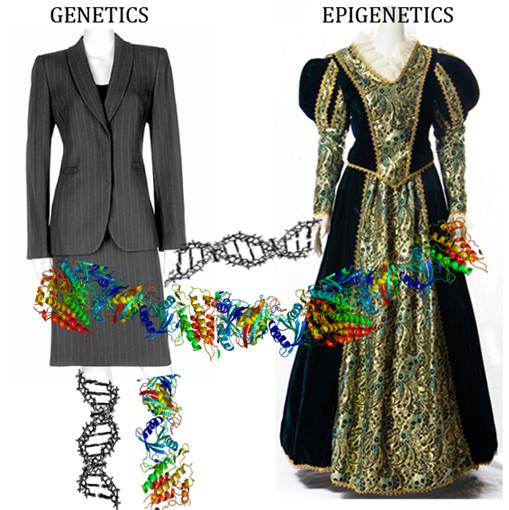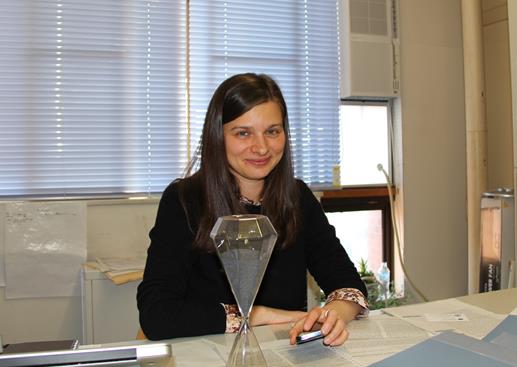TSUKUBA FUTURE
#054 Putting a dream on plants
Associate Professor BUZAS Diana, Faculty of Life and Environmental Sciences

The basic traits of both plants and animals are determined by their DNA, the genetic code that carries the message of how the organism is to develop. However, just as the lines on every person's palms are different, in the process of growth many variationsmay appear during growth. The phenomenon of heritable information getting added to the DNA's base sequence is called epigenetics. Prof. Buzas is researching the mechanisms of epigenetics using plants.
The cacti plant first caught her attention and sparked an interest in this biology. Born and raised in Transilvania, a historical province situated in the heart of Romania, Prof. Buzas went through the standard eight years of primary education (elementary and junior high school) and four years of secondary education (high school). In high school, students need to choose a subject area/specialization, and Prof. Buzas chose to study mathematics and physics. As a child, Prof. Buzas took many kinds of lessons and had a wide range of interests. Her parents never forced her to go in any specific direction, but perhaps her father being an engineer influenced her decision to study mathematics and physics.
Then she met a collector of cacti and soon began collecting cacti herself, growing many species from seed. When cacti are small and just emerging from the seed, they don't display the species charcateristics of the mature plant. Prof. Buzas observed that, in fact, as they grow they keep changing their morphology until they reach maturity. While trying to find an explanation for this phenomenon, she became enamored with the study of plants. She even came up with the hypothesis that during the process of growth cacti go through stages resembling successive stages in the evolution of the species before developing the unique species characteristics (in other words, ontogeny reproduces phylogeny).
When she spoke about this with her history teacher in high school, she learned that her theory was known as "recapitulation theory" or "biogenetic law," and was developed in the nineteenth century by Ernst Haeckel, a well-known scientist. Modern science has since discredited the theory in other fields of study. Even so, Prof. Buzas gained great confidence in her ability to develop a hypothesis based on her own observations.
As her interest had shifted to plant biology, in college Prof. Buzas majored in horticultural science rather than physics, and studied genetics. That is when she encountered molecular biology. For graduate school, she studied abroad at Queensland University in Australia, earning a PhD. At that point she returned to Romania, then shortly returned to Australia to be a postdoctoral researcher.
Prof. Buzas arrived in Japan in 2009 and spent time as a researcher at the Nara Institute of Science and Technology, Nagahama Institute of Bio-Science and Technology, and as a specially appointed assistant professor at the Yokohama City University. In 2015 she took up a post at the University of Tsukuba. Throughout her research career, Prof. Buzas has stuck to the principle of constantly seeking out the best research environment, moving on before the dust settles on her latest findings.
Prof. Buzas' current field of research is plant epigenetics. This field may not be familiar to many people, but it is growing with tremendous speed. The genetic information of living things is transmitted from parents to offspring through the base sequence of DNA. In sexual reproduction through the fertilization of the egg by the sperm, or the pollination of the pistil with the stamen's pollen, half of each parent's genetic information is transmitted to the offspring, at which point the offspring's DNA sequence or genotype is fixed. But during the process in which the fertilized reproductive cells grow, mechanisms exist by which a change in phenotype appeare without a change in genotype. This is epigenetics.
The phenomena known as DNA modification or DNA methylation are examples of such mechanisms. Prof. Buzas researches these mechanisms and their applications. If we use the analogy of clothing, when a DNA modification occurs, even with the same DNA sequence, a simple suit may be transformed into an elaborate dress. Prof. Buzas has a dream that an annual plant can be changed into a perennial through manipulating epigenetic information, thereby stabilizing food production. To pursue this research, she is busy trying to improve the current laboratory and secure research funds.

Through epigenetics, can a suit become a dress?

30-minute hourglass for kanji writing practice
Prof. Buzas speaks about the fluid beauty of the basic Japanese alphabet?hiragana. She also says that it is necessary to learn kanji characters to be able to fully function as an academic. So, on her office wall she has a poster of the official list of 2,136 characters in common use.
At different institutions in Australia, every fortnight friday evening they had a "happy hour" at which people from the same working group socialized together while drinking beverages they had brought in. These sessions greatly increased interactions within the work environment. Why not do something similar at Tsukuba, she thought. She began a socializing event and choose a corresponding term in Japanese: "Hanakin". The event takes place every second and fourth Friday of the month at 5:30 p.m. As a cosmopolitan woman, she is putting down roots in Tsukuba, and the time for her research to blossom may also be near.
Article by Science Communicator at the Office of Public Relations


